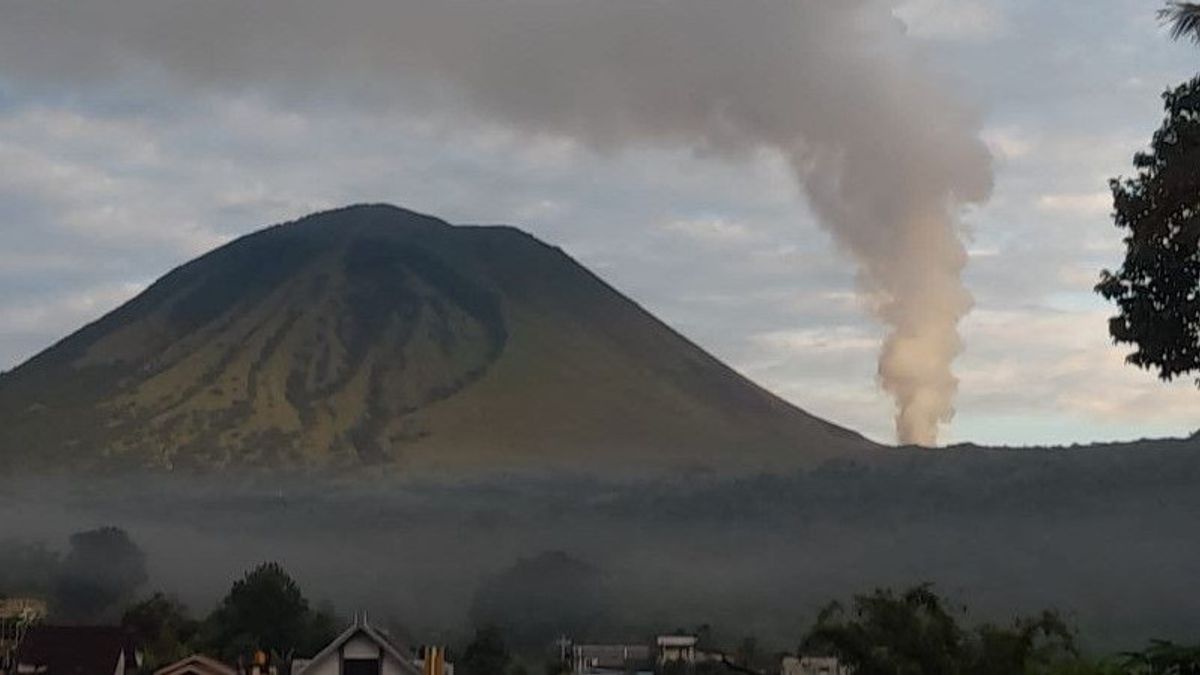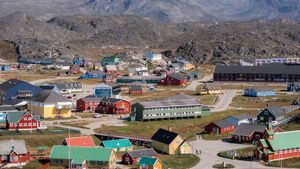The Center for Volcanology and Geological Hazard Mitigation (PVMBG) of the Geological Agency of the Ministry of Energy and Mineral Resources appealed to residents not to carry out activities around the Tompaluan crater, Mount Lokon, in Tomohon City, North Sulawesi (Sulut).
Lokon Volcano Observation Post personnel, Armando Manguleh said based on observations on Wednesday, June 14 at 00.00-24.00 WITA, the activity of Mount Lokon has not yet sloped.
"Indeed, in the last two days there has been an increase in volcanic activity, usually in one day an earthquake has been recorded below five times," he said, in Tomohon, North Sulawesi, Thursday, June 15, which was confiscated by Antara.
Visually, he continued, Mount Lokon was still covered in fog. Meanwhile, moderate to strong pressure crater smoke was observed to be white with moderate to thick intensity with a height of 50-350 meters above the crater peak.
It was also recorded as many as 20 earthquake gusts of amplitude between five and 37 millimeters with a duration of between 10-55 seconds.
In addition, eight shallow volcanic earthquakes with an amplitude of between five and 33 millimeters for three to 10 seconds and two distant tectonic earthquakes with an amplitude of between two and 43 seconds for 55-155 seconds were recorded.
"The current status of Mount Lokon is still on alert level II," said Armando.
اقرأ أيضا:
Some of the PVMBG recommendations, namely the community and tourists, are not close to and carry out activities within a radius of 1.5 kilometers (km) from the Tompaluan crater.
In the event of an eruption and ash rain, he said, people are advised to stay indoors and if they are outside the house, they are advised to use a nose, mouth (mask) and eyes (glasses).
PVMBG also invites residents to be aware of the potential for lahars in rivers that originate from the peak of Mount Lokon, especially during the rainy season.
In the past two days circulated on social media photos accompanied by a narrative of thick white smoke with a height coming out of the Tompaluan crater. According to him, the appearance of thick white smoke is unusual.
"The thick white smoke that arises from the crater is not only due to volcanic activity, but also because of the rainwater that enters and comes into direct contact with the heat inside the crater," said Armando.
The English, Chinese, Japanese, Arabic, and French versions are automatically generated by the AI. So there may still be inaccuracies in translating, please always see Indonesian as our main language. (system supported by DigitalSiber.id)


















